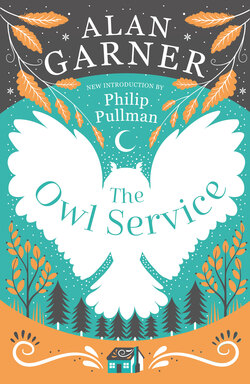Читать книгу The Owl Service - Alan Garner, Alan Garner - Страница 10
INTRODUCTION
ОглавлениеWhen this book was first published, in 1967, I was an undergraduate at Oxford reading English, and I remember the sensation it caused – not among the academics, for whom children’s literature was an area of no interest whatsoever, but among those of us who had arrived at university with our heads already harbouring an unhealthy fascination with hobbits and elves and so on. Tolkien was all the rage, but we weren’t allowed to take an academic interest in that sort of thing because fantasy was as un-literary, as looked down on, as an enthusiasm for books that children read. The fantasy fans had already read and enjoyed the three earlier books by Alan Garner, The Weirdstone of Brisingamen (1960), The Moon of Gomrath (1963) and Elidor (1965), but The Owl Service was something new, and tougher, and truer than anything we’d yet seen.
Like the earlier books, and unlike The Lord of the Rings, The Owl Service is set in our world, the “real” world as we call it. The fantastical elements irrupt into everyday life: the realistic settings and characters experience and are altered by their encounters with the mythical or the other-worldly. This way of writing a story is sometimes known as “low fantasy”, in contrast to the “high fantasy” of the Tolkien sort, where everything is made up. I think it’s a useful distinction, and I vastly prefer the low to the high.
What distinguishes The Owl Service from its predecessors, and from pretty well anything else published for children until then, is something uncompromising in the telling. We have to keep our wits about us as we read: everything we need is there, and nothing we don’t need. A great deal of the text consists of dialogue, which is sharp and tense and brilliantly economical. As a way of revealing character, Garner’s dialogue is unsurpassed: we can almost see the patronising, unperceptive, well-intentioned and severely limited Clive, the nervy, quick-witted, imaginative, generous, rebellious Gwyn. Clive’s relationship with his stepdaughter, Alison, could hardly be better revealed than through his own words:
“You’re looking a bit peaky this morning,” said Clive. “Sure you’re OK? Mustn’t overdo things, you know. Not good for a young lady.”
The tension in the family situation is made even more vivid by the setting. Garner is exceptionally sensitive to the atmosphere of places, and the Welsh valley where he conceived the story, and where the TV version was filmed, is a powerful and oppressive character in its own right. I have driven past that valley many times, and never without feeling glad to have left it behind. Setting and people, both living and mythical, combine in this wonderful novel to produce an effect unlike anything else in fiction. Is it a children’s book? Of course it is, and of course it’s not only for children. Nowadays, I’m very glad to say, children’s literature is taken seriously by academe, and not dismissed as trivial. The Owl Service is one of the books that made that both possible and necessary. Fifty years after it was first published, we can see that it was always a classic.
Philip Pullman
